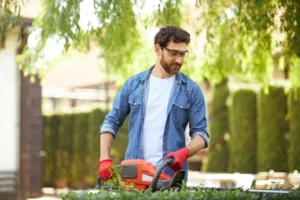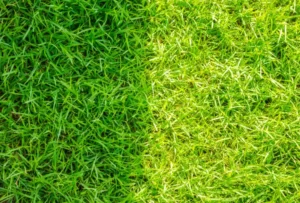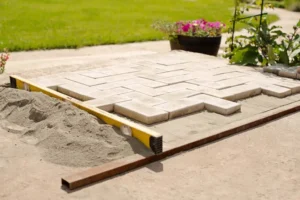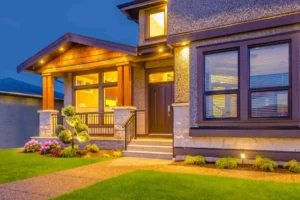What is the best landscape fabric that lets water through? Choosing the right landscape fabric for your garden or landscaping projects is crucial for promoting healthy plant growth and maintaining the integrity of your outdoor spaces. Landscape fabric serves as a barrier that helps prevent weed growth, while also allowing water to drain effectively through the soil. It’s especially important to consider the fabric’s ability to let water through, ensuring proper drainage for plant roots.
When selecting the ideal landscape fabric for drainage, you should look for materials designed specifically for this purpose, as these fabrics allow water to pass through while blocking unwanted weeds. By opting for the best landscape fabric drainage solution, you ensure the perfect balance of water retention and weed control, creating an optimal environment for your plants to thrive.
Understanding Landscape Fabric
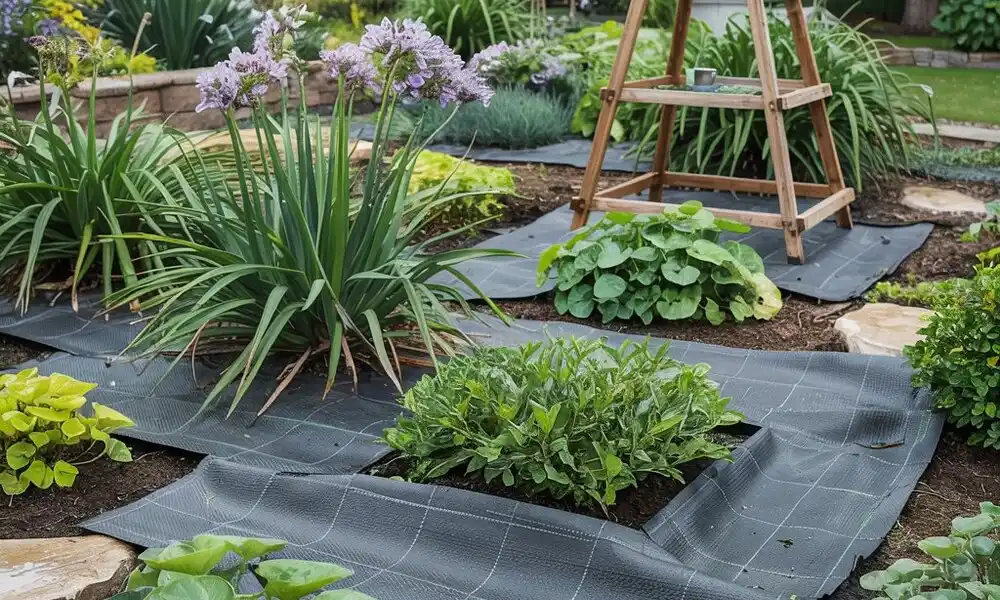
What is Landscape Fabric?
Landscape fabric is a synthetic material used in landscaping and gardening to control weeds and promote water drainage. It’s typically made from polyester or polypropylene and helps create a barrier that prevents weeds while allowing water and air to pass through the soil.
Common Uses
- Weed Control: Blocks sunlight to prevent weed growth, ideal for garden beds, flower beds, and paths.
- Pathways & Mulch: Used under gravel or mulch to reduce weed growth and prevent soil compaction.
- Gardens: Helps maintain clean garden beds by suppressing weeds and allowing water to reach plant roots.
How Landscape Fabric Works
Water Drainage and Weed Control
Landscape fabric helps control weeds by blocking sunlight but also needs to allow water to drain through. Poor installation or fabric clogging can result in landscape fabric not letting water through, which affects plant health. Choosing high-quality, permeable fabric helps avoid this issue.
Material Types
- Woven Fabric: Strong, durable, and allows good water filtration but can clog over time, leading to drainage problems.
- Non-Woven Fabric: Less durable but still effective at blocking weeds. It may also have drainage issues if clogged with soil.
You can also read about landscape design services in Bay Area.
What is the Best Landscape Fabric That Lets Water Through?
When choosing landscape fabric, one of the key factors to consider is its ability to let water through. The best fabrics allow water, air, and nutrients to pass while blocking weed growth, ensuring healthy plant roots. Here’s what to look for and the top options available.
Key Features to Look for in a Landscape Fabric for Water Drainage
- Material Permeability: The fabric’s permeability is crucial. Woven fabrics generally allow better water flow compared to non-woven ones.
- Water Flow Rates: The speed at which water can pass through the fabric is indicated by the flow rate. Fabrics with higher flow rates are better for drainage and preventing landscape fabric not letting water through.
Top Options for Landscape Fabric That Allows Water Through
Option 1: Woven Landscape Fabric
- Benefits of Woven Fabrics: Woven fabrics, made from interlaced fibers, offer excellent drainage. They provide good water filtration, ensuring that moisture and air reach the soil and plant roots without getting clogged. This reduces the chances of landscape fabric not letting water through.
- Recommended Brands and Types:
- DeWitt Pro-5 Weed Barrier: Known for its strong, durable weave and excellent water permeability.
- Gardener’s Supply Company Weed Barrier: Offers superior water flow and long-lasting performance.
Option 2: Permeable Landscape Fabric
- Comparison with Non-Permeable Fabric: Non-permeable fabrics, while effective at blocking weeds, are less ideal for drainage as they don’t allow water to pass freely. Permeable fabrics, however, are designed to permit water flow while still preventing weed growth.
- Best Uses for Permeable Fabric:
- Garden Beds: Ideal for garden beds where water drainage is important.
- Under Gravel: Great for areas like pathways or driveways where you need both weed control and proper drainage.
Option 3: Eco-Friendly Fabrics
- Sustainable Options That Still Allow Water Flow: Eco-friendly landscape fabrics made from recycled materials or biodegradable fibers can provide effective drainage without harming the environment.
- Environmental Considerations: These fabrics help reduce plastic waste, but it’s important to choose one that still maintains proper water permeability. Fabrics made from natural fibers, such as jute or coconut coir, offer good drainage while being biodegradable.
Which Fabric is Best for Specific Landscapes?
- For Gardens and Lawns: Woven or permeable fabrics are the best choices, as they allow sufficient water flow and air circulation. They help maintain healthy soil and prevent weeds effectively.
- For Driveways and Paths: Permeable landscape fabric works best here, as it prevents weed growth while allowing water to pass through gravel or stone paths.
You can also read about Bay Area Landscape Construction Services.
Should I Use Landscape Fabric Under Gravel?
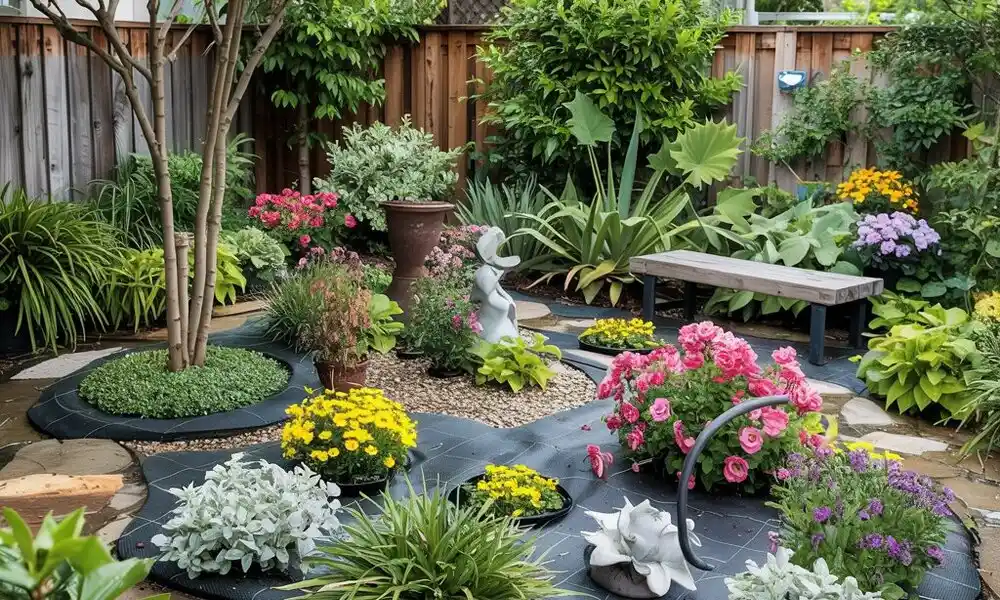
Using landscape fabric under gravel is a common practice, especially for driveways, pathways, and other gravel-based areas. It helps manage weeds, improves drainage, and prevents the gravel from mixing with soil. However, there are both benefits and drawbacks to consider before making a decision.
Pros of Using Landscape Fabric Under Gravel
- Preventing Weed Growth: One of the primary reasons for using landscape fabric under gravel is its ability to block weeds. It acts as a barrier that prevents weed seeds from germinating, reducing the need for constant weeding and herbicides.
- Enhancing Drainage: Landscape fabric helps with proper water drainage by allowing water to flow through while preventing soil from mixing with gravel. This is especially advantageous in places that have poor drainage or are prone to pooling.
- Protecting Gravel from Sinking into the Soil: Over time, gravel can sink into the soil beneath it, especially in areas with heavy foot or vehicle traffic. The fabric helps maintain the gravel layer’s structure by keeping it separate from the soil, which ensures the gravel stays in place and maintains its appearance.
Cons of Using Landscape Fabric Under Gravel
- Potential Long-Term Degradation: Landscape fabric may degrade over time due to exposure to sunlight, moisture, and the weight of the gravel. As the fabric breaks down, it may lose its effectiveness in preventing weed growth and could also hinder drainage.
- Maintenance Concerns: Over time, the fabric may become clogged with dirt, debris, or plant material. This can reduce its permeability and affect both drainage and weed prevention, leading to the fabric not letting water through as efficiently.
Best Practices for Gravel Installation with Landscape Fabric
- Layering Techniques: When installing gravel over landscape fabric, it’s important to use multiple layers:
- First Layer (Base Layer): A layer of crushed stone or gravel as a base provides stability for the overall gravel structure.
- Second Layer (Landscape Fabric): Lay the fabric on top of the base layer, ensuring it covers the entire area without overlapping edges. This will prevent soil from mixing with the gravel while allowing water to pass through.
- Third Layer (Top Gravel Layer): Place a final layer of gravel on top. The size of the gravel used will depend on the specific area and its intended use. Ensure the gravel is distributed evenly.
- Choosing the Right Fabric for Gravel-Based Areas:
- Opt for a woven landscape fabric as it provides better water drainage and durability compared to non-woven varieties.
- Ensure the fabric is designed specifically for outdoor use and can withstand the weight and pressure of gravel and traffic.
- Consider the fabric’s permeability—it should allow water to pass through while preventing soil from coming into contact with the gravel.
Advantages of Landscape Fabric
Landscape fabric is a versatile tool widely used in landscaping and gardening for its many benefits. Here’s how it can improve your outdoor spaces while saving you time and money.
Weed Control
One of the primary advantages of landscape fabric is its ability to control weeds. By blocking sunlight, landscape fabric prevents weed seeds from germinating and growing. This eliminates the need for chemical herbicides, making it an environmentally-friendly option. The fabric allows air and water to pass through, but weeds can’t penetrate it, keeping your garden beds clean and free of unwanted vegetation.
Soil Erosion Prevention
In areas prone to heavy rainfall or on slopes, landscape fabric plays a crucial role in soil erosion prevention. The fabric stabilizes the soil by holding it in place, reducing the impact of water runoff that could wash away soil and valuable nutrients. This is particularly useful for areas like hillsides or garden beds with loose, sandy soil. Additionally, landscape fabric for drainage ensures water is filtered through the fabric rather than pooling on the surface, further preventing erosion.
Improved Aesthetics and Cleanliness
Landscape fabric helps maintain the aesthetic appeal of your outdoor space. By preventing weeds and keeping mulch in place, it reduces the mess that can come from soil mixing with mulch or gravel. This not only makes your garden or pathway look neat and tidy but also keeps the surface clean over time. Without fabric, mulch can get easily displaced or absorbed into the soil, leaving the area looking untidy.
Cost-Effective and Long-Lasting
Compared to other methods of weed control or erosion prevention, landscape fabric is a cost-effective solution with long-lasting benefits. While the initial investment may be slightly higher than using mulch alone, the durability of the fabric over time ensures it lasts for years, saving money on regular replacements or treatments. It also requires minimal maintenance, making it a more affordable and sustainable option in the long run. When used for drainage purposes, the fabric doesn’t degrade quickly, ensuring it performs effectively year after year.
How to Choose the Right Landscape Fabric for Your Needs
Considerations for Water Drainage Needs
Assess your landscape’s water flow requirements. If you need good drainage, choose a fabric with high permeability that allows water to pass through easily. This is especially important for areas prone to heavy rainfall or pooling water.
Fabric Weight and Durability
Balance fabric strength and permeability. Heavier fabrics tend to be more durable but may reduce water flow if too thick. Lighter fabrics may allow better drainage but might not last as long under heavy foot traffic or weather exposure.
Climate and Soil Conditions
Choose the fabric type based on your local environment. For dry or arid climates, select a fabric that won’t clog with dust or dirt. In wet areas, opt for fabrics with high water permeability to prevent water from pooling. Consider the soil type to ensure the fabric can effectively control weeds while allowing proper drainage.
Conclusion
In summary, woven fabrics and permeable options are the best choices for allowing water to flow through while preventing weeds. Woven fabrics are great for durability, while permeable fabrics excel in garden beds and gravel paths. For sustainable options, eco-friendly fabrics offer both performance and environmental benefits. At Lakota Design Group, we’re here to help you choose the right fabric based on your specific needs. Whether it’s for flower beds, driveways, or any other landscaping project, our experts are ready to guide you. Contact us today for personalized advice and solutions tailored to your landscape!
FAQs
What Is Landscape Fabric, And Why Is It Important For Water Drainage?
Landscape fabric is a material used in gardening and landscaping to block weeds while allowing water and air to pass through the soil. It’s important for water drainage because it helps water filter down to plant roots without causing soil erosion or pooling.
What Type Of Landscape Fabric Lets Water Through The Best?
Woven fabrics are often the best choice for allowing water to flow through. They are designed with interlaced fibers that offer excellent drainage while preventing weeds. Permeable fabrics are also ideal for areas that need good water filtration.
Can Non-Woven Landscape Fabric Allow Water Through?
Non-woven fabrics do allow water to pass, but they typically have lower permeability than woven fabrics. Over time, they may clog more easily with dirt and debris, reducing their effectiveness in water drainage.
How Do I Know If My Landscape Fabric Will Drain Water Properly?
Look for fabrics labeled as “high permeability” or check the flow rate of water through the fabric. Higher permeability fabrics will allow better water filtration and prevent issues like landscape fabric not letting water through.
Is Landscape Fabric Necessary For My Garden If I Want Proper Drainage?
If your garden has heavy rainfall or poor drainage, landscape fabric can help by allowing water to flow through while preventing the soil from washing away. It’s especially useful for garden beds and areas prone to erosion.

